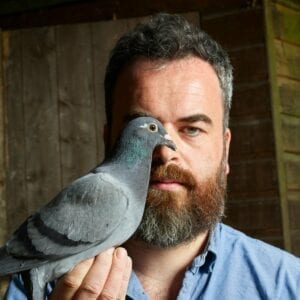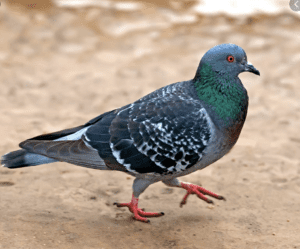
by Pigeon Patrol | Oct 5, 2021 | Pigeon Predators, Pigeon Spikes, Pigeons, Pigeons in the News, Raccoons, Sparrows, UltraSonic Bird Control
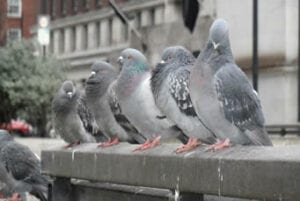
Pigeons are a successful and adaptable group of birds that thrive in varied habitats. Most of the pigeons commonly seen in cities in the United States are feral rock doves (Columba livia), descendants of birds first brought to America from Europe in the 1600s. Sometimes also called rock pigeons, these birds make their homes in a variety of habitats throughout the world, but many have adapted to life with humans.
Urban Landscapes
Pigeons thrive in cities where humans create buildings that pigeons are able to adapt for their own use. Tall buildings and window ledges simulate the natural cliffs where wild pigeons live, and the birds use these man-made spots to roost, loaf and build their nests. City birds scavenge from the trash and from pet food dishes left outside, and they will pick up any dropped bits of food that they find. It’s also common for people to feed city pigeons bits of bread, crumbs and birdseed.
Rural and Suburban Pigeons
Cities aren’t the only place that pigeons can thrive. Where in the wild they might have used cliffs and caves, in rural and suburban areas pigeons are quick to move into open barns and abandoned homes, under bridges and around other available human structures. They eat spilled grain, garden waste and animal food, as well as any other foods that present themselves. These birds sometimes make a nuisance of themselves by living and feeding around farms and grain storage elevators.
Rocky Cliffs
In the wild pigeons often live on or near large, rocky cliffs. They typically build their nests on the faces of these cliffs, presenting a challenge to many would-be predators. Pigeons also live inside caves, near the opening, when these are available. In the wild they mostly eat seeds and grains, but will also eat fruit, insects, slugs, snails and even small lizards. Both parents take turns incubating the eggs, and it’s not uncommon for pigeons to return to the same nest year after year, making a new nest on top of the old one.
Other Pigeon Habitats
Pigeons live in almost every part of the world. They inhabit forests such as rainforests, temperate deciduous forests, swamp forests and arboreal forests. Pigeons inhabit desert areas where the get water by eating succulent plants, and they also live on islands, in mangrove forests, in chaparral and in almost every other environment on Earth. The only places where pigeons haven’t settled in are the high Arctic and Antarctic regions. In areas where food is plentiful and the environment is favorable, pigeons may live in groups of hundreds or even thousands of birds.
Source
Pigeon Patrol Products & Services is the leading manufacturer and distributor of bird deterrent (control) products in Canada. Pigeon Patrol products have solved pest bird problems in industrial, commercial, and residential settings since 2000, by using safe and humane bird deterrents with only bird and animal friendly solutions. At Pigeon Patrol, we manufacture and offer a variety of bird deterrents, ranging from Ultra-flex Bird Spikes with UV protection, Bird Netting, 4-S Bird Gel and the best Ultrasonic and audible sound devices on the market today.
Voted Best Canadian wholesaler for Bird Deterrent products ten years in a row.
Contact us at 1- 877– 4– NO-BIRD, (604) 585-9279 or visit our website at www.pigeonpatrol.ca
Pigeon/Pigeon Patrol / Pigeons Roosting / Vancouver Pigeon Control /Bird Spikes / Bird Control / Bird Deterrent / Pigeon Deterrent? Surrey Pigeon Control / Pest /Seagull deterrent / Vancouver Pigeon Blog / Birds Inside Home / Pigeons in the cities / Ice Pigeons/ What to do about pigeons/ sparrows , Damage by Sparrows, How To Keep Raccoons Away, Why Are Raccoons Considered Pests/ De-fence / Pigeon Nesting/ Bird Droppings / Pigeon Dropping/ woodpecker control/ Professional Bird Control Company/ Keep The Birds Away/ Birds/rats/ seagull/pigeon/woodpecker/ dove/sparrow/pidgeon control/pidgeon problem/ pidgeon control/flying rats/ pigeon Problems/ bird netting/bird gel/bird spray/bird nails/ bird guard

by Pigeon Patrol | Sep 28, 2021 | Pigeon Spikes, Pigeons, Pigeons in the News, Raccoons, Sparrows, UltraSonic Bird Control
A ban on feeding Venice’s famed flocks of pigeons took effect Wednesday. It’s an attempt to control the burgeoning number of birds blamed for spreading filth and ruining the city’s monuments.
Please don’t feed the pigeons.
A ban on feeding Venice’s famed flocks of pigeons took effect Wednesday. Nineteen pigeon-feed sellers on St. Mark’s Square immediately went out of business. They had long been granted licenses to sell packages of dried corn to tourists wanting snapshots of themselves covered with the birds.
A spokeswoman in Venice said people who feed the pigeons face fines from $80 to $775.
Mayor Massimo Cacciari pushed for the ban in an attempt to control the burgeoning number of pigeons blamed for spreading filth and ruining the city’s glorious facades and monuments.
The pigeon-feed sellers, who said they have been selling their wares on St. Mark’s Square for a century, remained up in arms and protested the ban with placards on their booths aimed at the mayor, including: “Curse the day I voted for you” and “Cacciari, what kind of Venetian are you?”
Source
Pigeon Patrol Products & Services is the leading manufacturer and distributor of bird deterrent (control) products in Canada. Pigeon Patrol products have solved pest bird problems in industrial, commercial, and residential settings since 2000, by using safe and humane bird deterrents with only bird and animal friendly solutions. At Pigeon Patrol, we manufacture and offer a variety of bird deterrents, ranging from Ultra-flex Bird Spikes with UV protection, Bird Netting, 4-S Bird Gel and the best Ultrasonic and audible sound devices on the market today.
Voted Best Canadian wholesaler for Bird Deterrent products ten years in a row.
Contact us at 1- 877– 4– NO-BIRD, (604) 585-9279 or visit our website at www.pigeonpatrol.ca
Pigeon/Pigeon Patrol / Pigeons Roosting / Vancouver Pigeon Control /Bird Spikes / Bird Control / Bird Deterrent / Pigeon Deterrent? Surrey Pigeon Control / Pest /Seagull deterrent / Vancouver Pigeon Blog / Birds Inside Home / Pigeons in the cities / Ice Pigeons/ What to do about pigeons/ sparrows , Damage by Sparrows, How To Keep Raccoons Away, Why Are Raccoons Considered Pests/ De-fence / Pigeon Nesting/ Bird Droppings / Pigeon Dropping/ woodpecker control/ Professional Bird Control Company/ Keep The Birds Away/ Birds/rats/ seagull/pigeon/woodpecker/ dove/sparrow/pidgeon control/pidgeon problem/ pidgeon control/flying rats/ pigeon Problems/ bird netting/bird gel/bird spray/bird nails/ bird guard
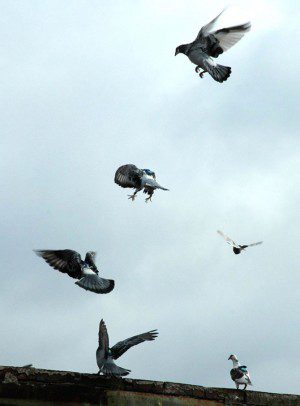
by Pigeon Patrol | Sep 28, 2021 | Pigeon Spikes, Pigeons, Pigeons in the News, Raccoons, Sparrows, UltraSonic Bird Control
A pilot study to see if feeding pigeons birth control can lower their numbers at Vancouver’s SkyTrain stations has expanded to include eight stations in the region.
The program works by installing a feeder and a camera on TransLink property at stations where there’s a pigeon problem. The feed contains OvoControl, a product that interferes with birds’ eggs’ ability to hatch.
As the birds who call the stations home die of natural causes, researchers and TransLink staff hope there won’t be as many young birds to take their place, and pigeon numbers will decrease over time.
“We think TransLink can be a real leader in humane wildlife control,” Sara Dubois, the BC SPCA’s chief scientific officer, told Daily Hive in a phone interview.
“We’re trying to manage them in a way that’s safe for them and for trains.”
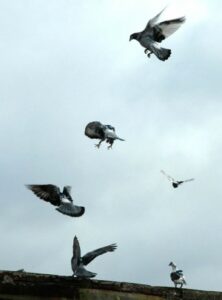
Dubois and the UBC graduate students she’s working with installed the first feeder in January 2019.
Now, the program has been expanded to include eight stations for the study. Four stations feed birds OvoControl, and the other four contain regular food. Over time, the researchers will see whether the birth control significantly reduces pigeon flocks at stations.
It’s still possible for new birds to travel to the stations, Dubois said. But if they stay and eat the birth control consistently, their reproductive abilities will soon be curbed as well.
Pigeons have long caused problems for the transit authority, because their presence on tracks can stop trains and delay customers. Staff also have to spend time cleaning up their excrement from platforms.
Dubois recounted one incident where a pigeon nest caught on fire and service on the Expo Line had to be stopped for several hours.
Previously, TransLink has installed spikes and netting to keep pigeons out, but those methods haven’t been effective. Dubois doesn’t want to see the birds killed, and sees using birth control as an effective way to keep pigeons safe and trains moving.
TransLink and the BC SPCA aren’t revealing which stations have the birth control feeders so that the equipment doesn’t get vandalized. Dubois said that earlier this year they already had one camera and feeder go missing.
If the birth control proves effective, Dubois says it could be a relatively cheap way to reduce the number of birds causing SkyTrain problems.
“It’s really inexpensive compared to the cost of maintenance, cleaning, and trains being down,” she said.
Source
Pigeon Patrol Products & Services is the leading manufacturer and distributor of bird deterrent (control) products in Canada. Pigeon Patrol products have solved pest bird problems in industrial, commercial, and residential settings since 2000, by using safe and humane bird deterrents with only bird and animal friendly solutions. At Pigeon Patrol, we manufacture and offer a variety of bird deterrents, ranging from Ultra-flex Bird Spikes with UV protection, Bird Netting, 4-S Bird Gel and the best Ultrasonic and audible sound devices on the market today.
Voted Best Canadian wholesaler for Bird Deterrent products ten years in a row.
Contact us at 1- 877– 4– NO-BIRD, (604) 585-9279 or visit our website at www.pigeonpatrol.ca
Pigeon/Pigeon Patrol / Pigeons Roosting / Vancouver Pigeon Control /Bird Spikes / Bird Control / Bird Deterrent / Pigeon Deterrent? Surrey Pigeon Control / Pest /Seagull deterrent / Vancouver Pigeon Blog / Birds Inside Home / Pigeons in the cities / Ice Pigeons/ What to do about pigeons/ sparrows , Damage by Sparrows, How To Keep Raccoons Away, Why Are Raccoons Considered Pests/ De-fence / Pigeon Nesting/ Bird Droppings / Pigeon Dropping/ woodpecker control/ Professional Bird Control Company/ Keep The Birds Away/ Birds/rats/ seagull/pigeon/woodpecker/ dove/sparrow/pidgeon control/pidgeon problem/ pidgeon control/flying rats/ pigeon Problems/ bird netting/bird gel/bird spray/bird nails/ bird guard
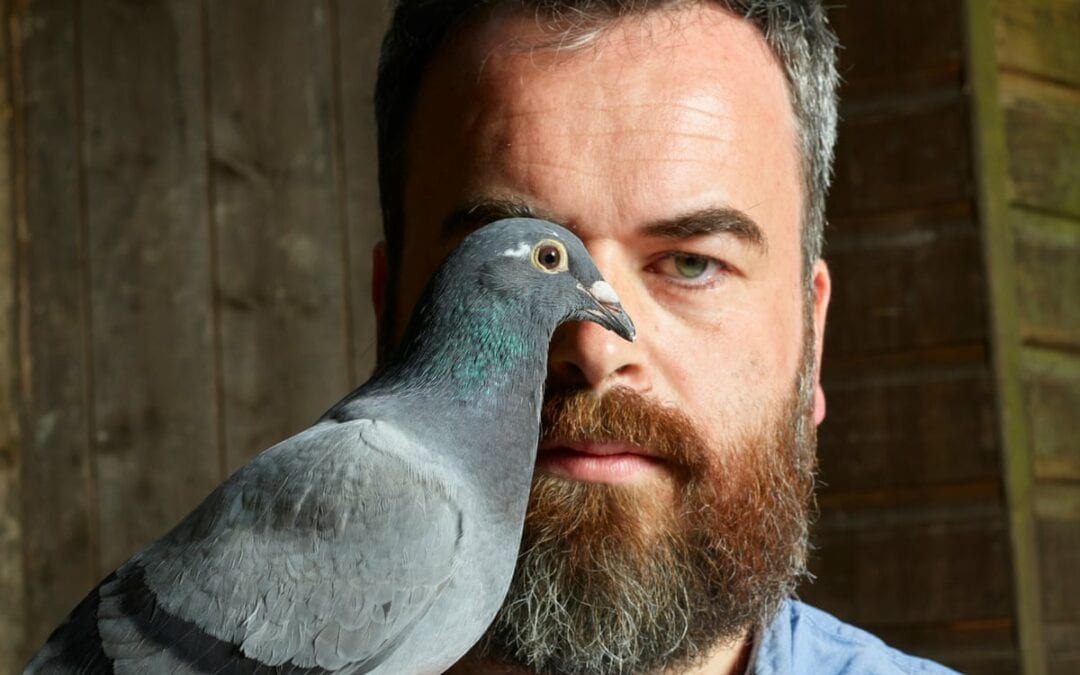
by Pigeon Patrol | Sep 14, 2021 | Pigeon Spikes, Pigeons, Pigeons in the News, Raccoons, Sparrows, UltraSonic Bird Control
New research has shown that feral, untrained pigeons can recognise individual people and are not fooled by a change of clothes.
Researchers, who will be presenting their work at the Society for Experimental Biology Annual Conference in Glasgow on Sunday the 3rd of July, have shown that urban pigeons that have never been caught or handled can recognise individuals, probably by using facial characteristics.
Although pigeons have shown remarkable feats of perception when given training in the lab this is the first research showing similar abilities in untrained feral pigeons.
In a park in Paris city centre, pigeons were fed by two researchers, of similar build and skin colour, wearing different coloured lab coats. One individual simply ignored the pigeons, allowing them to feed while the other was hostile, and chased them away. This was followed by a second session when neither chased away the pigeons.
The experiment, which was repeated several times, showed that pigeons were able to recognise the individuals and continued to avoid the researcher who had chased them away even when they no longer did so. Swapping lab coats during the experiments did not confuse the pigeons and they continued shun the researcher who had been initially hostile.
“It is very likely that the pigeons recognised the researchers by their faces, since the individuals were both female and of a similar age, build and skin colour,” says Dr. Dalila Bovet a co-author of this work from the University of Paris Ouest Nanterre La Défense. “Interestingly, the pigeons, without training, spontaneously used the most relevant characteristics of the individuals (probably facial traits), instead of the lab coats that covered 90% of the body.”
The fact that the pigeons appeared to know that clothing colour was not a good way of telling humans apart suggests that the birds have developed abilities to discriminate between humans in particular. This specialised ability may have come about over the long period of association with humans, from early domestication to many years of living in cities.
Future work will focus on identifying whether pigeons learn that humans often change clothes and so use more stable characteristics for recognition, or if there is a genetic basis for this ability, linked to domestication or to having evolved in an urban environment.
Source
Pigeon Patrol Products & Services is the leading manufacturer and distributor of bird deterrent (control) products in Canada. Pigeon Patrol products have solved pest bird problems in industrial, commercial, and residential settings since 2000, by using safe and humane bird deterrents with only bird and animal friendly solutions. At Pigeon Patrol, we manufacture and offer a variety of bird deterrents, ranging from Ultra-flex Bird Spikes with UV protection, Bird Netting, 4-S Bird Gel and the best Ultrasonic and audible sound devices on the market today.
Voted Best Canadian wholesaler for Bird Deterrent products ten years in a row.
Contact us at 1- 877– 4– NO-BIRD, (604) 585-9279 or visit our website at www.pigeonpatrol.ca
Pigeon/Pigeon Patrol / Pigeons Roosting / Vancouver Pigeon Control /Bird Spikes / Bird Control / Bird Deterrent / Pigeon Deterrent? Surrey Pigeon Control / Pest /Seagull deterrent / Vancouver Pigeon Blog / Birds Inside Home / Pigeons in the cities / Ice Pigeons/ What to do about pigeons/ sparrows , Damage by Sparrows, How To Keep Raccoons Away, Why Are Raccoons Considered Pests/ De-fence / Pigeon Nesting/ Bird Droppings / Pigeon Dropping/ woodpecker control/ Professional Bird Control Company/ Keep The Birds Away/ Birds/rats/ seagull/pigeon/woodpecker/ dove/sparrow/pidgeon control/pidgeon problem/ pidgeon control/flying rats/ pigeon Problems/ bird netting/bird gel/bird spray/bird nails/ bird guard
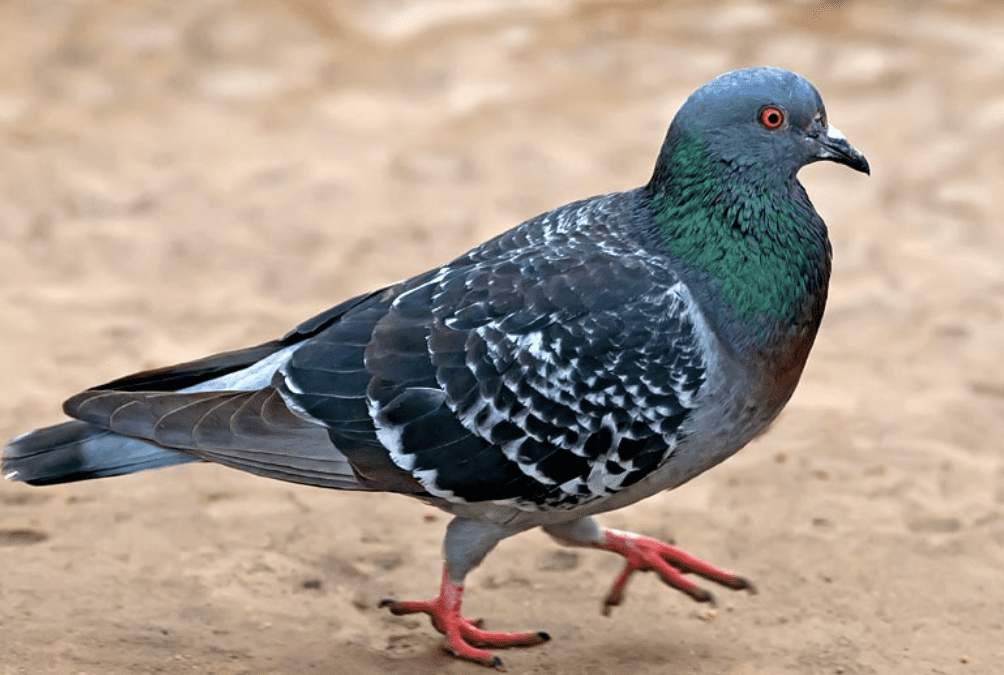
by Pigeon Patrol | Sep 14, 2021 | Pigeon Patrol's Services, Pigeon Predators, Pigeon Spikes, Pigeons, Pigeons in the News, Raccoons, Sparrows, UltraSonic Bird Control
In a rather surprising turn of events, it appears pigeons use their body to make sharp turns, rather than stronger wing strokes when flying. This bit of news comes from Ivo Ros of Harvard University and his colleagues who have been studying the bird’s flight skills with high speed cameras. They have published their results in the Proceedings of the National Academy of Sciences.
Intuitively, it might seem, at least to humans who have no natural wings of course, that to turn, especially when sharp angles are involved, that flailing the wing harder or faster that is opposite the turn would be the most natural way to proceed. After all, that’s the approach us humans would use in water for instance, in trying to turn quickly. But that’s not how birds operate, at least not pigeons. Ros and his team set up nine high-speed synchronized cameras in a hall that had a ninety degree turn in the middle of it. They then marked a pigeon in sixteen places to track just exactly how each body part moved as it flew. They then set the bird to flying the hallway, capturing every detail and noting precisely what goes on with its body, wings, and tail as it turns. Surprisingly, it turned out that the pigeon neither flapped faster or harder, opting instead to simply turn or roll its body to adjust for the turn and allowing its wings to flap as they would were the bird heading straight. Once through the turn, the bird then readjusted its body to enable straight ahead flight.
While all this may not seem all that remarkable, after all, the pigeons have likely been turning in flight for more years than we have held interest in how they do so, the observations may provide important information for people wishing to improve on clunky old human flight, or more specifically, when trying to build drones that can fly better than what is available today.
It’s not hard to imagine the difference. Sending a drone down a narrow hall where it must negotiate a ninety degree turn is quite frankly, impossible at this point, though a helicopter, which perhaps not coincidently turns in ways very similar to the pigeon, could do it with ease. This is because it can slow down without losing lift. But if the drone could be made to maneuver its body as it turns, perhaps then it could perform maneuvers that the common pigeon takes for granted.
Source
Pigeon Patrol Products & Services is the leading manufacturer and distributor of bird deterrent (control) products in Canada. Pigeon Patrol products have solved pest bird problems in industrial, commercial, and residential settings since 2000, by using safe and humane bird deterrents with only bird and animal friendly solutions. At Pigeon Patrol, we manufacture and offer a variety of bird deterrents, ranging from Ultra-flex Bird Spikes with UV protection, Bird Netting, 4-S Bird Gel and the best Ultrasonic and audible sound devices on the market today.
Voted Best Canadian wholesaler for Bird Deterrent products ten years in a row.
Contact us at 1- 877– 4– NO-BIRD, (604) 585-9279 or visit our website at www.pigeonpatrol.ca
Pigeon/Pigeon Patrol / Pigeons Roosting / Vancouver Pigeon Control /Bird Spikes / Bird Control / Bird Deterrent / Pigeon Deterrent? Surrey Pigeon Control / Pest /Seagull deterrent / Vancouver Pigeon Blog / Birds Inside Home / Pigeons in the cities / Ice Pigeons/ What to do about pigeons/ sparrows , Damage by Sparrows, How To Keep Raccoons Away, Why Are Raccoons Considered Pests/ De-fence / Pigeon Nesting/ Bird Droppings / Pigeon Dropping/ woodpecker control/ Professional Bird Control Company/ Keep The Birds Away/ Birds/rats/ seagull/pigeon/woodpecker/ dove/sparrow/pidgeon control/pidgeon problem/ pidgeon control/flying rats/ pigeon Problems/ bird netting/bird gel/bird spray/bird nails/ bird guard
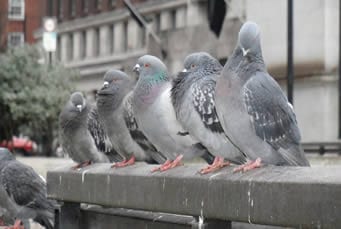
by Pigeon Patrol | Sep 7, 2021 | Pigeon Predators, Pigeon Spikes, Pigeons, Pigeons in the News, Raccoons, Sparrows
BAD AXE — A 24-year-old Pigeon man must spend about three more months in jail for stealing and pawning nearly $20,000 worth of jewelry belonging to a friend’s mother.
Matthew J. Rousse was sentenced to 120 days in the Huron County Jail, with credit for 29 days already served, and two years of probation.
Sentencing was delayed in September when Rousse was receiving in-patient substance abuse treatment, Bay City Times records show.
Rousse pleaded guilty in July to one count of larceny less than $20,000.
From Oct. 1, 2009, to March 5, Rousse took a $2,096 wedding band, a $3,180 diamond ring and various gold chains and charms, investigators said.
He pawned the goods in Saginaw and Bay City, authorities said.
Source
Pigeon Patrol Products & Services is the leading manufacturer and distributor of bird deterrent (control) products in Canada. Pigeon Patrol products have solved pest bird problems in industrial, commercial, and residential settings since 2000, by using safe and humane bird deterrents with only bird and animal friendly solutions. At Pigeon Patrol, we manufacture and offer a variety of bird deterrents, ranging from Ultra-flex Bird Spikes with UV protection, Bird Netting, 4-S Bird Gel and the best Ultrasonic and audible sound devices on the market today.
Voted Best Canadian wholesaler for Bird Deterrent products ten years in a row.
Contact us at 1- 877– 4– NO-BIRD, (604) 585-9279 or visit our website at www.pigeonpatrol.ca
Pigeon/Pigeon Patrol / Pigeons Roosting / Vancouver Pigeon Control /Bird Spikes / Bird Control / Bird Deterrent / Pigeon Deterrent? Surrey Pigeon Control / Pest /Seagull deterrent / Vancouver Pigeon Blog / Birds Inside Home / Pigeons in the cities / Ice Pigeons/ What to do about pigeons/ sparrows , Damage by Sparrows, How To Keep Raccoons Away, Why Are Raccoons Considered Pests/ De-fence / Pigeon Nesting/ Bird Droppings / Pigeon Dropping/ woodpecker control/ Professional Bird Control Company/ Keep The Birds Away/ Birds/rats/ seagull/pigeon/woodpecker/ dove/sparrow/pidgeon control/pidgeon problem/ pidgeon control/flying rats/ pigeon Problems/ bird netting/bird gel/bird spray/bird nails/ bird guard







